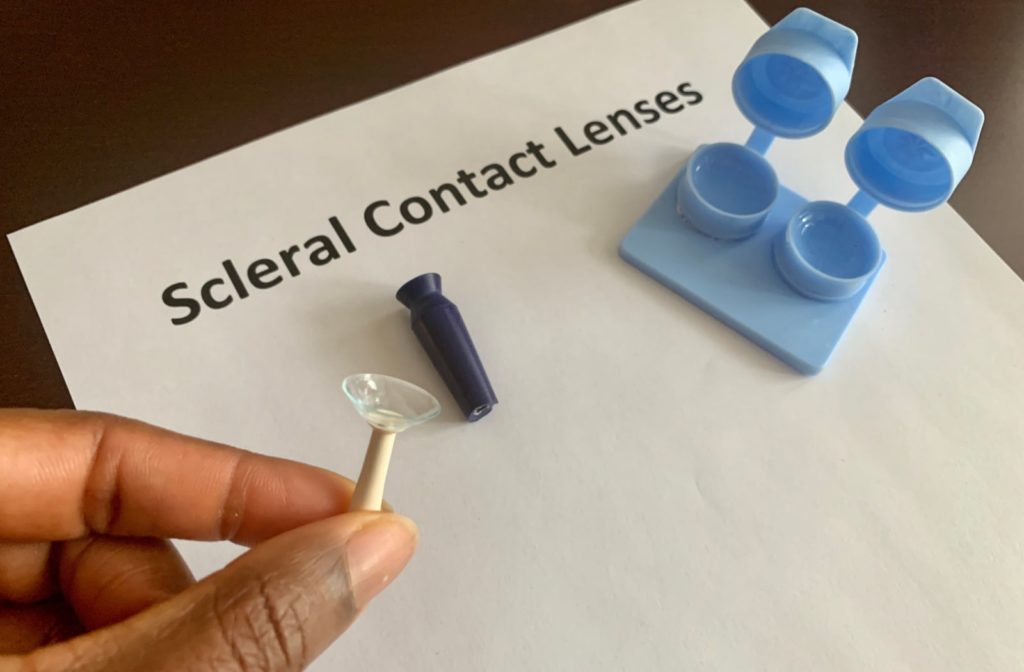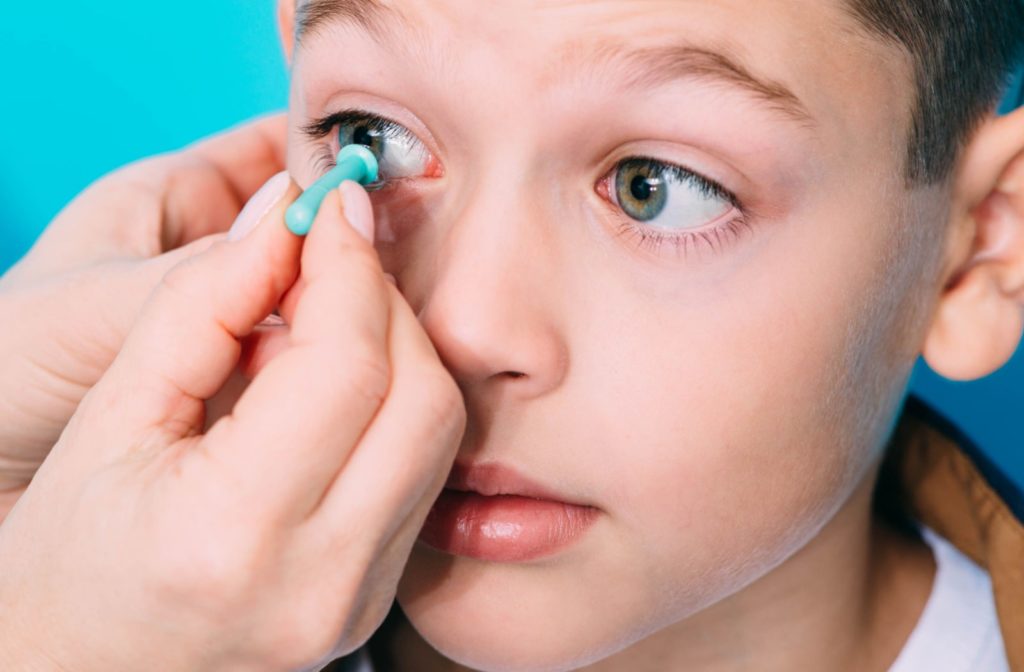Dry eyes can be a common issue for people who wear contact lenses, causing discomfort and making it difficult to wear lenses for extended periods. While artificial tears can help reduce dryness, trying different contact lenses can also help relieve dry eyes.
Scleral contact lenses can provide relief and make wearing contact lenses more comfortable because they have a fluid reservoir that keeps the eyes moist. However, if you experience persistent dry eye symptoms, see your eye doctor to determine the underlying cause and receive proper treatment.
What Is Dry Eye?
Many people prefer to wear contact lenses over glasses. In the United States, more than 30 million people wear contacts. They’re convenient, comfortable, and provide unobstructed vision.
But contact lenses can also cause dry eyes when you wear them for extended periods. Dry eye, or dry eye syndrome, is a sometimes chronic condition where the eyes produce insufficient tears or poor-quality tears that can’t lubricate and nourish the eye.
Causes of Dry Eye
Several causes of dry eye can affect tear volume, evaporation, and quality of the tear film that contains water, mucus, and oil. These can include:
- Age—Tear production decreases with age.
- Gender—Due to hormonal changes, women are more likely to develop dry eyes.
- Medications—Antihistamines, decongestants, blood pressure medications, and antidepressants can reduce tear production.
- Medical conditions—Rheumatoid arthritis, diabetes, and thyroid problems can cause dry eye symptoms.
- Environmental conditions—Smoke and wind exposure and dry climates can increase tear evaporation, resulting in dry eye.
- Other factors—Long-term use of contact lenses can cause dry eyes. Eye surgery, such as LASIK, may also contribute to dry eye symptoms.
Symptoms of Dry Eye
Symptoms of dry eye can vary depending on the cause and the severity. Common symptoms can include the following:
- Redness
- Eye pain
- Stinging or burning sensation
- Light sensitivity
- Watery eyes
- A gritty or scratchy feeling
- Irritation
- Stringy mucus near the eye
- Blurry vision
Treatment for Dry Eye
Some treatments for the symptoms of dry eyes alone won’t address the underlying cause. It’s important to seek care from a professional, as untreated chronic dry eye can lead to various complications.
Treating dry eye can include one or more of the following options:
- Over-the-counter artificial tears can help lubricate the eyes and relieve dryness.
- Prescription eye drops, such as Restasis and Xiidra, can help your eyes make more tears.
- Serum tears can help relieve dry eye symptoms.
- Punctum plugs can help prevent excessive tear drainage and retain the eye’s moisture.
- Heat masks can help reduce symptoms of chronic dry eye.
- Avoid environments that can lead to dry eyes, such as smoke, wind, and air conditioning.
Dry Eye & Contact Lenses
Contact lens-related dry eye is common; Around half of those who wear contacts experience contact lens-related dry eye.
However, you don’t have to give up wearing contact lenses. Treating the underlying cause of your dry eye can help. Another solution is to switch to a different type of contact lens.

Scleral Contact Lenses
While most contact lenses rest on the cornea, scleral lenses rest on the sclera (the white part of the eye). They have a larger diameter and vault over the cornea to create a fluid reservoir.
The benefits of scleral lenses include the following:
- They’re gas permeable, allowing oxygen to reach the eye.
- They don’t move over the cornea, so they may feel more comfortable.
- They have a tear-filled reservoir that helps relieve chronic dry eye symptoms.
- They provide vision correction.
- You can wear them for longer periods.
- They work for those with irregular cornea shapes.
Your eye doctor can determine if scleral contact lenses will work for you by conducting a comprehensive eye exam and contact lens consult.
Ways to Prevent Dry Eye
Caring for your contact lenses is an important step in keeping your eyes healthy. Here are a few ways to care for your contacts and prevent dry eyes:
- Always wash your hands before and after handling your contact lenses.
- It’s best to remove your lenses when sleeping, as sleeping in your contacts can increase your risk of infection.
- Never use water for your contact lenses, as water can carry germs.
- Use a contact lens disinfecting solution to clean your lenses and the lens case.
- Change your contact lens case every 3 months.
Scleral Contact Lenses for Dry Eyes
Have you tried almost every contact lens type and still can’t find one for dry eyes? Consider giving scleral contact lenses a try.
Book an appointment with the eye doctors at 2020 Eyecare Ohio to see if scleral lenses can work for you to provide better and more comfortable vision.



